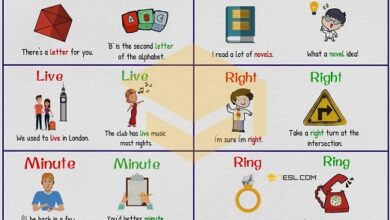Concepts of semantics Monosemy polysemy and Denotation
Semantics
Semantics is the part of grammar that studies the meaning of words. Semantics is related to the words meaning, signification and meaning. In this article we will provide you the information about Concepts of semantics.
Studying the meaning of words
Any word that has a meaning is considered a linguistic sign. For this to happen, there is a combination of a signifier and a signified. The signifier can be understood as the form that is seen or heard, that is, an acoustic image. The meaning can be understood as the content represented by the signifier.
Semantics studies this inseparable relationship of meaning between signifier and signified that exists in linguistic signs. It studies the meaning of words, as well as the interpretation of that meaning and the different meanings that words have in different contexts and over time.
For there to be communication, it is necessary to have basic meanings known and agreed by the speakers, but the true meaning of the word depends on its use, that is, on the way it is applied. The communicative situation is decisive in the meaning attributed to the word.
Basic Concepts of semantics
There are four basic concepts that must be understood for a good understanding of the semantic aspects of language: monosemy, polysemy, denotation and connotation.
Monosemy and polysemy
Monosemy is the ability of a word to have only one meaning. Monosemic words are specific words that allow a single reading, regardless of the communicative context:
- decagon (ten-sided polygon);
- pediatrician (doctor specializing in pediatrics).
Polysemy is the ability of a word to have multiple meanings. Polysemous words are words that allow different readings, depending on the communicative context in which they are used:
- lady (lady) and lady (game);
- head (body part) and head (group leader).
Denotation and connotation
Denotation indicates the ability of words to have their own literal meaning . The denotative meaning of a word indicates its most objective and common meaning, which does not depend on the context in which it occurs, considering its original meaning:
- The Sun is a star.
- I’m eating bread and butter.
The connotation indicates the capacity that words have to present a figurative and symbolic meaning. The connotative meaning of a word indicates its most expressive meanings, which go beyond its original meaning, being subject to different interpretations depending on the context in which they occur:
- You are the sun of my life.
- He was always a bun !
Semantic relationships of words
Words establish semantic relationships with each other, that is, they establish meaning and meaning relationships with each other. These relations can be of proximity, similarity, contrariety and hierarchy of meaning, among others.
| type of relationship | Designation | Meaning | Examples |
|---|---|---|---|
| synonymy | Synonyms or synonymous words | Words with similar meanings. | common and normal;
commitment and dedication. |
| antonymy | Antonyms or antonyms | Words with opposite meanings. | calm and agitated;
profit and loss. |
| homonymy | Homonyms or homonyms | Words that sound and spell the same, but have different meanings. | river (watercourse) and river (verb to laugh). |
| homophony | Homophones or homophones | Words that sound the same, but have different spelling and meaning. | bake and sew;
cell and saddle. |
| homograph | Homographs or homograph words | Words spelled the same, but with different sounds and meanings. | ice (frozen water) and ice (verb to freeze). |
| Paronymy | Paronyms or Paronyms | Words with similar spelling and sound, but different meanings. | rectify and ratify;
traffic and traffic. |
| Hyperonymy | hyperonyms | Words with hierarchically superior and broader meaning. | animal; sport; vehicle. |
| hyponymy | hyponyms | Words with a hierarchically lower and more restricted meaning. | cat; swimming; bus. |

